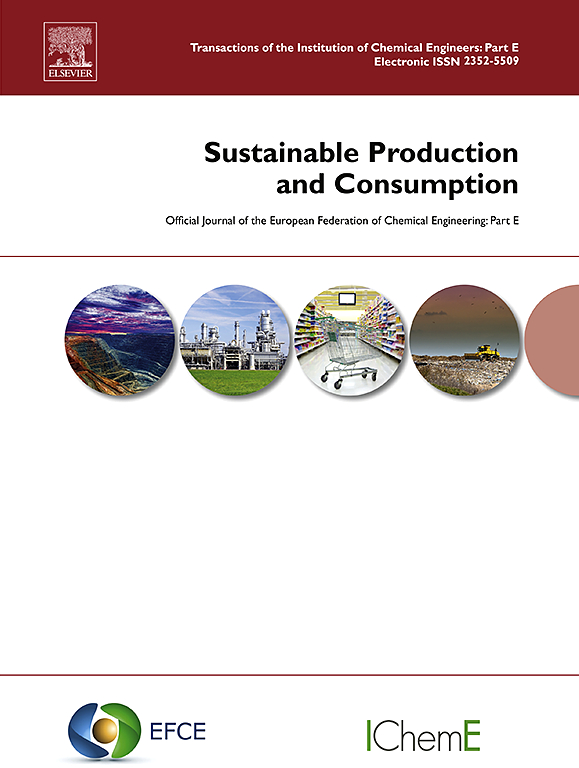揭示隐藏的环境成本并优化成品织物生产中的可持续bat筛选:基于lca的方法
IF 9.6
1区 环境科学与生态学
Q1 ENVIRONMENTAL STUDIES
引用次数: 0
摘要
实施最佳可用技术对纺织工业的可持续发展至关重要。然而,bat的选择通常基于技术可行性和直接环境效益,而忽略了综合环境影响和隐性成本。本研究提出了一种综合生命周期评估(LCA)、环境价格、VIKOR模型和熵权法的方法来评估成品面料生产的环境绩效和隐性成本,并筛选可持续的BATs。结果表明,根据归一化结果,涤纶整理织物的整体环境负担比棉织物低13.30%。纤维生产被确定为环境负荷的主要贡献者,平均占棉织物总环境负荷的50.67%,涤纶占57.75%。从货币角度来看,棉花的成本为每吨9256.08欧元,而聚酯的成本为每吨4646.72欧元,这表明其生态效率更高。此外,bat24(泡沫涂层技术)、bat17(超临界二氧化碳染色)和bat29(矿物油和施胶剂控制)被选为可持续发展的重点BAT。这些发现强调了基于环境可持续性和经济考虑选择织物的重要性。此外,采用可持续的bat可以提高整个纺织品生产价值链的环境和经济绩效。本文章由计算机程序翻译,如有差异,请以英文原文为准。

Unveiling hidden environmental costs and optimizing sustainable BATs screening in finished fabrics production: An LCA-based approach
The implementation of best available techniques (BATs) is crucial for the sustainable development of the textile industry. However, the selection of BATs is typically based on technical feasibility and immediate environmental benefits, while neglecting comprehensive environmental impacts and hidden costs. This study developed a comprehensive method integrating life cycle assessment (LCA), environmental price, and the VIKOR model with the entropy weight method to evaluate the environmental performance and hidden costs associated with the production of finished fabrics, and to screen sustainable BATs. The results revealed that the overall environmental burden of polyester finished fabrics was 13.30 % lower than that of cotton based on the normalized results. Fiber production was identified as the primary contributor to environmental loads, accounting for an average of 50.67 % of the total environmental burden in the cotton finished fabrics, and 57.75 % in the polyester, respectively. In monetary terms, cotton incurred a higher cost of € 9256.08 per ton, compared to € 4646.72 for polyester, indicating superior eco-efficiency. Additionally, BAT 24 (foam coating technology), BAT 17 (supercritical carbon dioxide dyeing), and BAT 29 (control of mineral oils and sizing agents) were selected as the top priority BATs for sustainable development. These findings highlight the importance of selecting fabrics based on both environmental sustainability and economic considerations. Moreover, the adoption of sustainable BATs can enhance both environmental and economic performance across the textile production value chain.
求助全文
通过发布文献求助,成功后即可免费获取论文全文。
去求助
来源期刊

Sustainable Production and Consumption
Environmental Science-Environmental Engineering
CiteScore
17.40
自引率
7.40%
发文量
389
审稿时长
13 days
期刊介绍:
Sustainable production and consumption refers to the production and utilization of goods and services in a way that benefits society, is economically viable, and has minimal environmental impact throughout its entire lifespan. Our journal is dedicated to publishing top-notch interdisciplinary research and practical studies in this emerging field. We take a distinctive approach by examining the interplay between technology, consumption patterns, and policy to identify sustainable solutions for both production and consumption systems.
 求助内容:
求助内容: 应助结果提醒方式:
应助结果提醒方式:


